Seven Jane's Blog
June 21, 2020
Book review: UNTIL SUMMER COMES AROUND by Glenn Rolfe
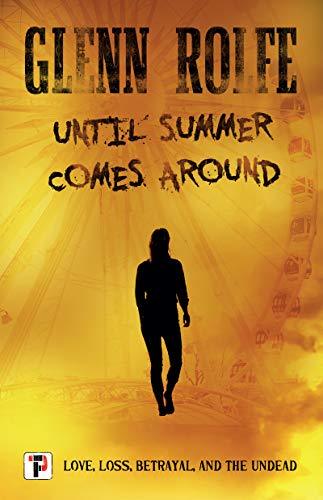 From books to film and TV, nostalgic horror has been all the rage of late, and Until Summer Comes Around [Flame Tree Press, May 2020] by Glenn Rolfe is comfortably at home in the genre. In fact, if Lost Boys, Buffy the Vampire Slayer (the Kristy Swanson flick), and Stranger Things had a fangy baby and put on paper, it might be this book—and that’s some high praise.
From books to film and TV, nostalgic horror has been all the rage of late, and Until Summer Comes Around [Flame Tree Press, May 2020] by Glenn Rolfe is comfortably at home in the genre. In fact, if Lost Boys, Buffy the Vampire Slayer (the Kristy Swanson flick), and Stranger Things had a fangy baby and put on paper, it might be this book—and that’s some high praise.Set in the summer of 1986 in the Maine beach town of Old Orchard Beach during its annual tourist wave, Until Summer Comes Around is a tale as old as time: boy meets girl, boy and girl fall in love, boy discovers girl is a vampire and her bloodthirsty and slightly batshit (vampire pun!) older brother is sucking the town’s population dry. Unbeknownst to anyone, a refreshingly dysfunctional family of vampires have come to OOB alongside the flock of faceless summer tourists, and one of them is just a little, er, hungrier than the others. He’s also very not cool to see his younger sister getting cozy on the beach with a boy.
Okay, so maybe it’s not actually a tale as old as time, but there are enough classic summer-love elements—and on-point references to an 80s timeline—in Rolfe’s When Summer Comes Around to give the novel the sort of swoony, surreal realism that makes a well-written flashback setting so immersive. The voices of the characters ring true, as do their emotions when what should be fun summer days devolve into a real-time nightmare sequence of disappearances, murders, and a whole lot of heartache for everyone involved. And, though the main protagonists in Summer are fifteen-year-old teenagers, Rolfe pulls no punches with the gore, balancing out all that sappy summertime passion with enough blood spatter, decaying corpses, and maggots—yes, maggots!—to successfully swerve right out of the possibility of Summer being anything less than a true horror story.
While Rolfe’s ability to convincingly pen a teenage summer romance of a decade bygone is sufficient enough to drape that familiar old feeling of shoulder-padded nostalgia atop your shoulders, it’s his take on classic vampire tropes that sets Summer apart. Despite the romantic element of the story, there’s no sun-sparkling teenage angst or smooth, Transylvanian seduction here (though there is the much more accurate, slightly bumbling approach to first love, because we’ve all been there). Likewise, there’s no garlic-fearing, crucifix-welding dependency on tried-and-tried vampire tropes, and the only references to coffins, black wardrobes, and poetic monologuing range from tongue-in-cheek to outright sardonic and are never to be taken seriously. Rolfe’s vampires are much more human, and much more…relatable…which only serves to up the ante in his coming-of-age-vampire-horror.
If you’re looking to go back in time to fall in love with a monster…Until Summer Comes Around is your next read.
Published on June 21, 2020 18:58
June 10, 2020
Audiobook Review: COME BACK TO THE SWAMP by Laura Morrison, Narrated by CHelsea Stephens
 New to audiobook, Laura Morrison’s Come Back to the Swamp is the spooky, swampy, supernatural solution to your June novella-audiobook needs!
New to audiobook, Laura Morrison’s Come Back to the Swamp is the spooky, swampy, supernatural solution to your June novella-audiobook needs!Half space-opera, half ecological manifesto, Morrison weaves fantasy, science fiction, and a chilling atmosphere into a punch-packing novella that keeps you on the edge of your seat. The story follows ecology-grad student Bernice as she discovers a strange old woman orbiting the swamps of Cleary Swamp, a local research site where Bernice is studying invasive species. Convinced the woman is a former civil rights activist named Rebecca who disappeared in the swamp decades earlier, Bernice believes the woman is as in need of salvation as the swamp itself, which has become riddled with things like Asiatic ivy that don’t belong. Bernice takes it upon herself to relocate the woman into safer territory. What she doesn’t realize, however, is that Asiatic ivy isn’t the only invasive species in Cleary Swamp—and the Swamp has had enough.
Suffice it to say, Bernice’s extraction of Rebecca…doesn’t go as planned. After a stint into a spore and pollen drug-induced state during which she enjoys a warp speed odyssey on the set of her favorite operatic sci-fi tv show, Space Mantis , Bernice awakens with a new clarity and understanding of the swamp’s needs. Though certainly jarring for Bernice, it’s hard not to miss Morrison’s deeper message, a fitting allegory to the sort-of “awakening” many environmentally-conscience folks might have: sometimes—despite our best intentions to the contrary—we are the invasive species. When it comes to preserving the order of the natural world, sometimes it’s humans that simply don’t belong.
Swamps and spooks aside, what makes Come Back to the Swamp such an engaging and resonant story is Morrison’s interpretation of main protagonist. A bit of an idealist, Bernice is snarky, headstrong, and courageous, and her inner monologue is so on point it’s hard not to feel instantly connected. Although we only get a few pages of Bernice, she’s an easy character to champion, empathize with, and—eventually—commiserate for. Likewise, narrator Chelsea Stephens is the perfect voice to bring Morrison’s words to life. She is just as able to capture Bernice’s snark and the Swamp’s ominous warnings as she is to convincingly voice the inner musings of the bobcats Bernice worries might roam the swamplands. Together, this audiobook is three hours of pure listening pleasure, and a story readers will want to return to time and time again.
Gripping, evocative, and as ripe with messaging on the consequences of ecological devastation as it is loaded with sci-fi references, subtle calls to environmental activism, and enough chilly moments to have you looking over your shoulder on your next hike out into the woods, Come Back to the Swamp will have readers (and listeners!) looking over their shoulders the next time they go walking alone out into the wild.
Published on June 10, 2020 17:58
May 11, 2020
Book Review & Author Interview: Broth from the Cauldron by Cerridwen Fallingstar

Broth from the Cauldron
[She Writes Press, May 12, 2020] offers a collection of good-for-the-soul stories told from one of today’s most inspirational spiritual leaders.
Broth from the Cauldron
[She Writes Press, May 12, 2020] offers a collection of good-for-the-soul stories told from one of today’s most inspirational spiritual leaders.As deeply personal as it is powerful, Broth from the Cauldron is a memoir assembled of memories and moments shared by Shamanic teacher and Wiccan Priestess Cerridwen Fallingstar. Intended as a “journey through mystery and magic”, Fallingstar guides her reader through carefully curated moments of her own life as she uses her own trajectory through teachable moments of compassion and wisdom to inspire the same in others—and it works.
While Fallingstar grounds each story within her unique brand of spiritualism, her own journey is as unique as it is relatable, which is something magical in itself: it elevates the book from a collection of essays into something that feels so genuinely heartfelt and inviting that the experience of reading feels like having a warm conversation with a close friend. She writes of growing up in a less-than entirely pleasant childhood, to moments of personal enlightenment and empowerment, to experiences joy, sorrow, and everything in between. In all of these Fallingstar’s indelible spirit persists as she explores life’s ups and downs with an open mind, an open heart, and a rather enviable amount of optimism.
Though some readers might take issue with some of Fallingstar’s stances, what is indisputable is the wisdom and compassion embedded within the stories she shares and the lessons they are meant to offer. Broth from the Cauldron, like Fallingstar herself, is not only accessible but—regardless of a reader’s faith, aptitudes, or personal moralities—is something very special, making it a book that will beg to be returned to whenever one needs a spiritual boost, a compassionate shoulder, or even a simply a lighthearted moment with a friend. Blessed be.
Hi Cerridwen! Can you tell us a little about yourself?
I have been fortunate to lead a life doing what I love, which is guiding people more deeply into magic, mystery, and the sacred through my teaching and my writing, and also through private counseling where I get to help people wrestle through their obstacles to awareness. My husband Elie used to say I reminded him of Sacajawea, leading expeditions through the wilderness. I was also fortunate to be married to such a marvelous man, for almost 26 years before his untimely death. We still communicate. I am blessed with a splendid son, Zach, a wonderful daughter-in-love, Loryn, and two mischievous sprites, Ruby and Zoe, my grand-daughters who just turned three, as well as some dear friends, some of whom you will meet in my book.
You wrote in your introduction to Broth from the Cauldron, “Stories simmer in our minds, often for years.” With a lifetime of lessons and so many unique experiences to include, how did you go about selecting those that you wanted to include in this book?
Many of them are teaching stories that I have used over and over in my classes. I use these stories to demonstrate to my students that our spiritual growth is not found outside of our ordinary human lives, but within them. And I use them to show my students that I am fallible; I show my vulnerability—not in a way that makes them responsible for healing me, just in a way that makes me authentic and accessible. If you want to make money, you present yourself as an infallible guru and manipulate people. Our culture is so abusive and controlling, people will almost always fall for that. But if you actually want a healthier, more functional world, if you want to truly help heal people and guide them to their true power—then honesty, and humor, and heartfulness are required.
Many of the stories included in Broth are deeply personal—which elevates the book from a collection of essays into something that feels so genuinely heartfelt and inviting that the experience of reading felt more like having a very warm conversation with a close friend. How did you find that perfect balance sharing so much of yourself with your reader with writing about such intimate personal moments of your own life?
That’s so kind of you to call it a perfect balance. I worked hard to try to provide, or imply, a ‘moral to the story’ without being preachy. It is such a balance for all of us to strive for, this union between the head and the heart, the spirit and the will. Lots of rewrites and the occasional insight from a friend or editor, letting me know when I missed the mark and needed to try again.
I know you also write fiction, and other narrative nonfiction. How was this memoir experience similar? Different?
Memoir is a lot easier to write than fiction because the memories are mostly floating around like leaves on the top of a pool—easily scooped up. The issue with memoir, of course, it that there may be people described who are still living, whose feelings might be hurt. There were chapters that I agonized over keeping in the book for that reason. Of course, I can and do change people’s names if I think they might not like how they are portrayed. The thing is, I know from experience that there are readers out there whose lives may be changed—or saved—by some truth that I write. But only if it is the truth; a lie, however pretty, does not have that power. Our culture encourages us to bury unpleasant truths, to paper them over with addiction and denial. There is a popular meme that encourages us not to tell the truth unless it is kind. But I believe that ultimately, the truth is always kind. Denial is what is killing us. And the truth will set us free.
There are so many wonderful lessons in Broth, and so many clever bits of compassionate wisdom that stuck with me, personally, that I could list off a dozen things that I will stay in my heart from this book. However, if you had to give your readers one takeaway that you hope they keep from this book, what would it be?
None of us want hard things, none of us want grief, failure, loss. The children’s stories in our culture almost all end at marriage; the ‘happy ending’. But in reality, there are no ‘happy endings’. There are happy beginnings, and happy middles. But endings suck. There is a Shultz cartoon of Charlie Brown and Lucy that I love, where Charlie Brown says, “Well, life is full of ups and downs,” to which Lucy shouts, “I don’t want ups and downs! I want ups, and upper ups!” The American dream is just that; ups and upper ups. But the downs, what I ruefully call ‘the unguided tour of the underworld’ --the downs are where the depth is. As Emily Dickinson wrote, ‘To comprehend a nectar, requires a sorest need.’ Spirituality reaches for the heavens, but soulfulness grows in the dark. Again, we don’t have to like loss, or court it. But we can believe that, as Rumi said, ‘There is a secret medicine, given only to those who hurt too hard to hope,’ and watch for the medicine inherent in every loss to emerge.
I think you might agree that everyone—regardless, perhaps, of faith or upbringing—can learn from not only the “teaching stories” you’ve written about, but those that you teach about, which makes the book not only accessible but something very special. With your many years of experience as a Shamanic teacher and Wiccan Priestess, how have you translated your lessons to those who walk a different spiritual path?
Rumi said, “Beyond all ideas of right-doing and wrong-doing, there is a field. I’ll meet you there.” Take any spiritual tradition deep enough into the mystical and they will start to sound alike. Because, deep within us, we know what is universal, we know love, we know truth. The Dalai Lama says, “My religion is kindness.” Well, what do you know—the Dalai Lama and I share the same religion. Rumi and I share a religion too. Beyond the label for my spiritual path, and the label for yours, there is a field. I’ll meet you there.
Lastly, I always like to ask ‘what’s next’? Can you share anything about what you’re currently working on, or other ways your readers might keep up with your next books and/or ventures?
I am currently working on a ‘humor memoir’, similar to what author David Sedaris produces, where the stories are both poignant and hilarious. This memoir is titled ‘Rocket in my Pocket’ and is due out in 2022. You no doubt noticed my sense of humor in ‘Broth from the Cauldron’. It will be more pronounced in ‘Rocket’. My website at www.cerridwenfallingstar.co--that is co, not com—will have further news. Although I am semi-retired, I will still show up to give talks at festivals and events, and I do individual readings by phone or—post covid—in person.
Synopsis (Goodreads):
Broth from the Cauldron is a collection of “teaching stories,” a literary Wiccan soup for the soul. It is a distillation of the wisdom Cerridwen Fallingstar has gathered from her journey through life, and from her forty years as a Shamanic teacher and Wiccan Priestess. At turns poignant and humorous, it chronicles her trajectory from a Republican cold war upbringing to Pagan Priestess, offering a portrait of a culture growing from denial to awareness. Accessible to any audience interested in personal growth, Broth from the Cauldron is for anyone who’s ever stood at the crossroads wishing a faery godmother would come along and show them the path.
Published on May 11, 2020 02:02
April 20, 2020
Book Review: Boy in the Box by Marc e Fitch
 In The Boy in the Box [Flame Tree Press, April 2020] a group of childhood friends with a dark secret set out to make amends for the sins of their past only to discover that some dark deeds don’t stay buried.
In The Boy in the Box [Flame Tree Press, April 2020] a group of childhood friends with a dark secret set out to make amends for the sins of their past only to discover that some dark deeds don’t stay buried.Ten years ago, lifelong friends Jonathan, Gene, and the Braddick brothers—Michael and Conner—took a hunting trip deep in the Adirondack Mountains to a remote piece of land known as Coombs’ Gulch. What was meant as a weekend getaway to celebrate the last days of singledom for soon-to-be-wed Jonathan culminated in a night of drunken machismo wherein Gene accidentally shot and killed a young boy. Despite the men’s questions—What was the boy doing wandering alone in the woods at night? How did he get so deep into the forest? Did they all see the same thing?—they buried the boy’s body in a makeshift tomb and swore to take their secret to the grave.
In the end, that termination point is exactly where the four men in the woods that night will find themselves—but not until the strange force that inhabits Coombs’ Gulch is ready to bring them home. After Gene’s untimely suicide, the Braddick brothers and Jonathan decide to return to the woods and relocate the boy’s body, otherwise they risk their secret being brought to light in upcoming construction. The three remaining members of the ordeal are already haunted men; they don’t want their darkness exposed to the people they love most—their families.
Once back out in the woods, the sleeping terror of that long-ago night stirs again, but the accident that seemed so straightforward before doesn’t seem to make sense now and the guilt-ridden trio finds themselves ensnared in a supernatural trap that transcends time and place. Like all ancient gods, the being in Coombs’ Gulch requires a sacrifice, and Jonathan and his friends are just the beginning.
Reminiscent of Neville’s The Ritual (2011), Fitch’s journey into the dark unknowns of ancient forests builds at a measured pace, pushing you forward in slow-building horror that exhibits all the stamina of a hike out into the woods. For all its narrative pontifications and redundancies, Boy in the Box is nevertheless still surprisingly creepy—one of those books that might not be too intimidating in the daytime but will have you leaving a light on at night, just in case.
Synopsis (Goodreads):
Ten years ago a mysterious and tragic hunting accident deep in the Adirondack Mountains left a boy buried in a storied piece of land known as Coombs' Gulch and four friends with a terrible secret. Now, Jonathan Hollis and brothers Michael and Conner Braddick must return to the place that changed their lives forever in order to keep their secret buried. What they don't realize is that they are walking into a trap -- one set decades earlier by a supernatural being who is not confined by time or place: a demon that demands a sacrifice.
Published on April 20, 2020 12:54
April 8, 2020
Book Review: The Secret Brokers by Alexandrea Weis

The Secret Brokers [Vesuvian Books, April 7, 2020] is classic noir meets modern thriller, with just enough twist to keep readers waiting for the next installment.
Fresh off a failed romance and thrust in charge of his former boss’ elite spies-for-hire business, secrets broker Dallas August has a job to do. The only problem is, something doesn’t add up—from the mafia kingpin who’s hired him, the questionable involvement of the FBI, or the enigmatic woman he’s been hired to de-secret. He can’t put his finger on it, but the knowledge Dallas was hired to retrieve from reclusive target Gwen Marsh may be just the start of things hidden. He’s just got to keep Gwen, and himself, alive long enough to figure it out.
While Weis’s take on a spy thriller carries the classic elements of a crime drama—intrigue, romance, corruption—the story is as much noir as it is a love letter to the author’s home of New Orleans. There are mafia bosses, shoot outs, and the requisite amount of alcohol-swilling, but there are also references to New Orleans’ unique French Quarter architecture and the south’s deep love of their animals, both of which draw from the author’s background and give authenticity to the story that doesn’t rely on flashy settings and over-the-top sophisticated technologies to enjoy.
It’s more cozy than suspense, but what The Secret Brokers might lack in glitz it makes up for in curb appeal to readers who might otherwise shy away from crime drama—which is a good thing.
Part of this “curb appeal” is Weis’s ability to develop characters that are relatable and complex without being weighted down. Dallas August is a hesitant spy thrust in charge of his organization, a leader navigating the minefields of human resource issues just trying to keep his sanity above water. He’s also a man coming to terms with his new life and how he can survive his day job while trying to heal a broken heart. More interesting than Dallas, though—and what makes The Secret Brokers not-just-another-male-led-spy-novel—is Gwen Marsh, who’s very clearly not your usual damsel-in-distress and (mercifully) not simply an erotic fixture. She’s capable, dynamic, and she has more secrets than Dallas August has a chance of uncovering, which ultimately makes the Secret Brokers Series—a spinoff to Weis’s Nicci Beauvoir Series—something to get behind.
Synopsis (Goodreads):
Dallas August runs a dangerous business—an organization of elite spies for hire.
The secrets trade.
Nothing is off limits, and no price is too high.
When asked to uncover what recluse Gwen Marsh knows about a Mafia kingpin’s death, Dallas poses as a bodyguard to get close to his target, but the stubborn Asian beauty wants nothing to do with him. As the FBI and the Mafia close in, danger drives them together, but can he protect Gwen, or will Dallas be the one risking everything to discover what she is really hiding?
Dallas August is about to find out how dangerous life can be as one of the Secret Brokers.
Once you are in, there is no turning back.
Published on April 08, 2020 06:00
April 6, 2020
Book Review: The Southern Book Club's Guide to Slaying Vampires by Grady Hendrix
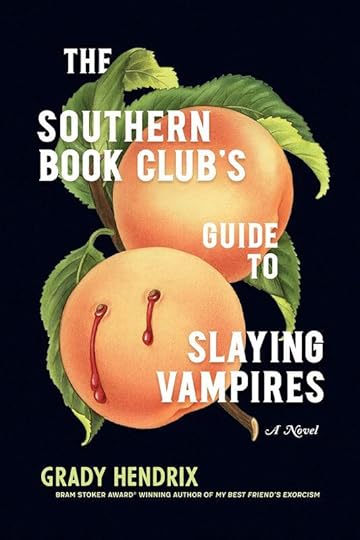 “Let me tell you something…there is nothing nice about Southern ladies.”
“Let me tell you something…there is nothing nice about Southern ladies.”Pitched as “Steel Magnolias” meets Dracula, The Southern Book Club’s Guide to Slaying Vampires is everything a reader like me—who grew up simultaneously reading The Babysitter’s Club and Goosebumps—has been waiting for. Thank you, Grady Hendrix, thank you.
Set in the 1990s, former-nurse-turned-disaffected-housewife Patricia Campbell is bored. Life as a stay-at-home mother to two children and a husband that works too much is unfulfilling, to say the least. If it weren’t for her book club and her troupe of mismatched girlfriends, Patricia might simply fade into the wallpaper of her well-cared-for home. Luckily—or, more aptly, unluckily—things are about to get a lot more interesting (and bloody) in Charleston’s quaint, and usually very safe, Old Village District.
Even though Patricia and the other ladies of her book club—wacky Kitty, uptight Grace, religious Slick, and somewhat ambiguous Maryellen—can’t get enough of the very-murdery true crime they read about, none are prepared when a handsome young stranger moves in with an elderly neighbor. Nor are they ready for the series of spiraling, odd events that begin when the seemingly mad old woman attacks Patricia—chomping off one of her earlobes in the process.
After an ominous warning about “the man in the ice cream suit” from her mother-in-law, Miss Mary, who suffers from dementia, and a series of odd occurrences that start to slip from strange to surreal, Patricia (slowly) begins to realize that her new neighbor isn’t at all what he seems. And, there’s danger afoot: children are missing, being preyed upon by some Big Bad that inhabits the woods outside Six Mile. Unfortunately, not only is no one listening to Patricia’s warnings as she begins to connect the pieces to something not only sinister but otherworldly; they think she’s caught up in her gory book club reads and maybe a bit loose in the head to boot, making the horror of this story not just atmospheric but personal. Which is worse: the monster Patricia sees in James Harris or the suspicions that lurk in her own head, eating her away from within? The only trouble, Patricia’s already invited the darkness in, and there’s no getting it out—not without a fuss and a good bit of scrubbing, anyway.
From cryptic warnings to the lurid romanticism associated with blood drinkers, plus ghosts, rats (dear gods, the rats!), and the special kind of nightmarish terror that waits for mothers in the dark when their children and families are threatened, The Southern Book Club’s Guide to Slaying Vampires does not disappoint, offering an entirely unique approach to established vampire lore in a tale as warm as it is chilling. A master of nostalgia, Hendrix slays in his latest—and so does a very unlikely group of heroines.
Synopsis (Goodreads):
Fried Green Tomatoes and "Steel Magnolias" meet Dracula in this Southern-flavored supernatural thriller set in the '90s about a women's book club that must protect its suburban community from a mysterious and handsome stranger who turns out to be a blood-sucking fiend.
Patricia Campbell had always planned for a big life, but after giving up her career as a nurse to marry an ambitious doctor and become a mother, Patricia's life has never felt smaller. The days are long, her kids are ungrateful, her husband is distant, and her to-do list is never really done. The one thing she has to look forward to is her book club, a group of Charleston mothers united only by their love for true-crime and suspenseful fiction. In these meetings, they're more likely to discuss the FBI's recent siege of Waco as much as the ups and downs of marriage and motherhood.
But when an artistic and sensitive stranger moves into the neighborhood, the book club's meetings turn into speculation about the newcomer. Patricia is initially attracted to him, but when some local children go missing, she starts to suspect the newcomer is involved. She begins her own investigation, assuming that he's a Jeffrey Dahmer or Ted Bundy. What she uncovers is far more terrifying, and soon she--and her book club--are the only people standing between the monster they've invited into their homes and their unsuspecting community.
Published on April 06, 2020 06:00
April 1, 2020
Interview with Author Alexandrea Weis
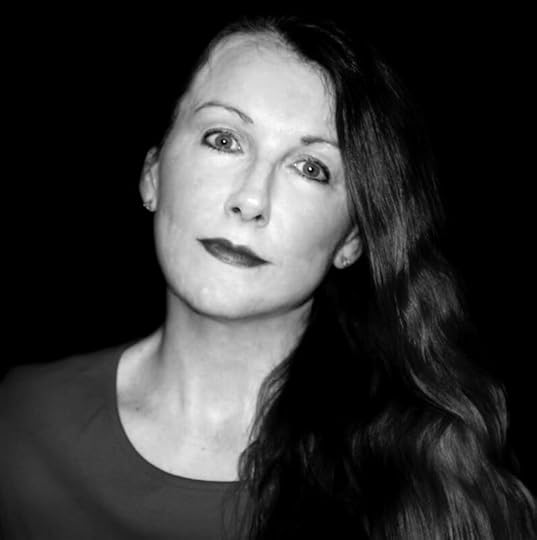
 The Secret Brokers
has all the classic elements of a good spy thriller: intrigue, romance, corruption… how did you go about the process of weaving these together into what has the feel of classic noir with a modern twist?
The Secret Brokers
has all the classic elements of a good spy thriller: intrigue, romance, corruption… how did you go about the process of weaving these together into what has the feel of classic noir with a modern twist?This series came from another, The Nicci Beauvoir Series, that introduced Dallas and his crew of spies. I wanted to take his character into a spin off because I loved writing his cold, edgy personality. I have always loved cold, dark characters, but with Dallas I wanted to write about a man torn between his heart and his head. A man who has tried to change his ways, only to end up with a broken heart, and crawls back into the world of shadows he once occupied. To make him a lost and trying to hide in our modern world seemed a good fit.
I know you’re from the New Orleans area, and you bring some of that N’awlins flair to your writing. What made you choose the French Quarter for Carl Bordonaro’s home and/or inspired some of the interesting decorative flourishes that you described?
Carl Bordonaro is another character I brought over from the Nicci Beauvoir Series. He and Cleveland appeared in Sacrifice from the previous series. Carl is a favorite and based on many New Orleans characters I have known. Having grown up in the French Quarter, I have always strived to flesh it out in my books—to show the real side of the city, and not the one the tourists see. There is a rhythm to New Orleans, a spicy smell and tingling sensation it gives you—or maybe it’s something only the locals feel—but I wanted to embody that in the novel. To help the reader get a sense of the city from the people who live there. And Carl’s home on Esplanade Avenue does exist. I passed it every day for years.
Animals, and Gwen’s relationship with them, are a big part of her character—from her dog Harley, cat Lawrence, and of course, her horses! You are a permitted/certified wildlife rehabber with the Louisiana Wildlife and Fisheries—how does this influence how you write about animals?
Animals are imprinted in my heartbeat. I could not survive without them. I have always been an advocate for all things furry, and in this novel, I got to write about something I did when I was young, rescuing racehorses. One of the horses mentioned in the novel, Whippadu, was mine. I felt it important to educate people about the plight of racehorses in the industry and show Gwen as someone who is a lot like me. I also placed her farm in Folsom, La. not far from my own residence. But being able to write about animals, and Gwen’s love for them, was rewarding.
Just for fun, if The Secret Brokers got the movie treatment and you could pick the cast, who might your dream team be?
Dallas August – Zac Efron
Gwen Marsh – Olivia Munn
Carl Bordonaro – John Goodman
Cleveland – Michael B Jordan
I don’t want to give away the twist at the end, but you did such an incredible job of it that I couldn’t resist asking—who’s the real star of this story, Dallas August or Gwen Marsh?
Dallas, because he is like all of us. No matter how smart, how educated, and how good a spy you are, there is always someone else one step ahead. I also love writing this character. He has so many layers and is so intriguing. He will always be a favorite.
Lastly, what can we expect next for Dallas and Gwen, and the Secret Brokers series?
The next book will grapple with their complicated relationship and their dark world of shadows. We will learn about Gwen’s past, and see more of the day-to-day operations of Dallas organization—his spies, their assignments, and the clients he struggles to appease.
Author Website: http://alexandreaweis.com/
Author Social: https://www.facebook.com/authoralexandreaweis/
IG: https://www.instagram.com/alexandreaweis/
Twitter: https://twitter.com/alexandreaweis
Published on April 01, 2020 00:00
March 26, 2020
INTERVIEW WITH AUTHOR Nguyen Phan Que Mai
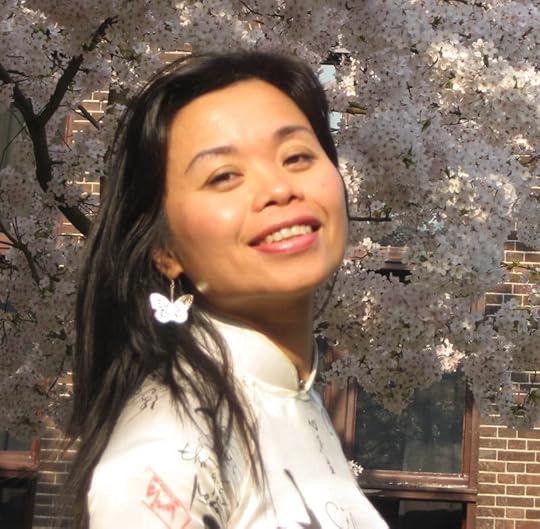
 Recently I had the opportunity to read and review a book called THE MOUNTAINS SING by Vietnamese author Nguyen Phan Que Mai [Algonquin Books, March 2020], and it was one of the most poignant, breathtaking novels I have had the pleasure of reading. Aside from being a lovely book, the author Que Mai, is equally as lovely and has become not only a dynamic presence with the success of her first English translation novel but a beautiful one as well. When her US tour was postponed due to the current pandemic, I was more than happy to engage with her for an Author Q&A. Enjoy! The Mountains Sing is such a personal, reflective story. Where there parallels here that tied into your life, or your family’s, that played a significant part in how you crafted the narrative? I saw on Instagram some posts you’d shared of you as a little girl, and I saw Hà Nội, so I would imagine this story is very real to you?
Recently I had the opportunity to read and review a book called THE MOUNTAINS SING by Vietnamese author Nguyen Phan Que Mai [Algonquin Books, March 2020], and it was one of the most poignant, breathtaking novels I have had the pleasure of reading. Aside from being a lovely book, the author Que Mai, is equally as lovely and has become not only a dynamic presence with the success of her first English translation novel but a beautiful one as well. When her US tour was postponed due to the current pandemic, I was more than happy to engage with her for an Author Q&A. Enjoy! The Mountains Sing is such a personal, reflective story. Where there parallels here that tied into your life, or your family’s, that played a significant part in how you crafted the narrative? I saw on Instagram some posts you’d shared of you as a little girl, and I saw Hà Nội, so I would imagine this story is very real to you?
The Mountains Sing was fueled by my wish to have a grandmother. Both of my grandmas had died before my birth. Growing up, I was very jealous of my friends who had grandmothers to tell them tales and stories of their family. So I told myself I would write a novel one day with a grandmother figure in it. And finally I found Grandma Diệu Lan in The Mountains Sing.
I have no photos of my grandmothers and as I wrote the novel, I could imagine how my grandmothers looked; I could hear their voices. So, yes, Grandma Diệu Lan is very real to me, as well as all other characters, including Hương, her parents, uncles and aunt. To bring these characters alive required a lot of work and attention to details, and that’s why it took me seven years to write and edit The Mountains Sing.
The novel is set in Hà Nội, the capital of Việt Nam and the city of my heart. I was not born there but worked there for many years. This is the city where I met the love of my life – my husband and gave birth to our two children. While in Hà Nội, I wrote my scooter or bicycle everyday to work, drank tea on the streets, mingled with elderly people who shared with me their stories, visited museums, art galleries. I did not know that all of these experiences were helping me prepare for The Mountains Sing, which I would write years later, after I had moved to Manila, Philippines. (My family has lived in many countries around the world since my husband works in development assistance.)
One of the things I was most captivated by in the novel were the relationships between the siblings and the divide between North and South Vietnam and how that tore apart mothers and children, siblings, etc. Is there anything further you can share on the realities of this that can help people who haven’t experienced something like that really understand the gravity of what that might have felt like—or continue to feel like for family’s impacted?
For many years, I wanted to write a book that encompasses the experiences of not just my family, but of others’ as well. I wanted to create a world which is authentically Vietnamese and fill it with Vietnamese characters, language, poetry, and culture. Yet I could not find a key to open the door to that world.
Then, in 2012, when I was traveling with a Vietnamese friend in a car, I asked him what it was like for him during the Việt Nam War. He told me that he was 12 years old when Hà Nội was targeted by B-52 bombers. His parents were in Russia at that time and he was living with his grandmother, who saved him from the bombing raids. His story moved me so much. When I went home that evening, after putting my two young children to bed, I sat down at my computer and googled about the bombings of Hà Nội. I heard audio broadcasts of the sirens warning citizens about bombing raids. With tears running down my face, I penned 2.000 words which eventually become the opening scene of The Mountains Sing. I wrote without knowing where the story would lead me.
But I knew I had to let Grandma Diệu Lan have many children, who would be separated by historical events which in turn lead them to becoming the enemy of one another. I have met too many Vietnamese families who were separated by the war and who ended up fighting against each other, just like the Trần family in The Mountains Sing.
Forty-five years after the war, tremendous progress has been made in terms of reconciliation between Việt Nam and the United States. But the wounds that divided Việt Nam and Vietnamese families, both at home and in the diaspora, remain profound and painful. For that reason, The Mountains Sing places our people at the center of the Việt Nam War in the hopes that we will be open to difficult but necessary conversations that can help one another heal.
Over the course of the story, I became very deeply connected to Trần Diệu Lan. Her relationship with Guava (Hương) was so intimate and so genuine that even on the other side of the page I felt like I could read my own grandmother into her voice. Who was the inspiration for this character?
Thank you so much for your kind words. My two grandmothers merge into one to become Grandma Diệu Lan. The Great Hunger’s event, for example, is inspired by the experiences of my father’s mother. She was killed in the Great Hunger of 1945. Her children were so hungry that she ventured into the village’s cornfield. She was caught and tied to corn plants. She was too weak to break away. My father knew the man who had killed his mother, and told me that after the Great Hunger, that man moved away from our village. I never knew what happened to that man so I created the character Wicked Ghost in The Mountains Sing. I showed the reader how Wicked Ghost was punished for what he’d done. But in the end, Wicked Ghost was forgiven somehow. In other words, this novel was my way of searching for healing, for forgiveness, because being able to forgive is the greatest gift that we can give ourselves.
This was your first English book. What was that process like? Did you find that the feelings and language you were expressing came across as you intended?
I have translated many books from Vietnamese into English and vice versa. Still, when I decided to write The Mountains Sing in English, it felt like climbing a mountain barefoot because I had never written a novel before. I had no plot for the book when I started writing it either.
But I wrote The Mountains Sing with the mindset of a Vietnamese who is fully aware of the importance of preserving the Vietnamese authenticity of her novel. My Vietnamese characters think and speak in Vietnamese, yet I had to transfer their thoughts and speech into English. My responsibility as a translator was to capture the Vietnamese essence of such expressions and not Westernize them.
I would like to thank readers of the book who accept the challenge of fully emerging themselves in Vietnamese culture by reading The Mountains Sing. It is not just diarictical marks, but you might have noticed that I do not always translate Vietnamese words. For example, early in the book, the reader learns that nón lá is a conical hat made of woven bamboo and palm leaves. After this explanation, I went to use nón lá without repeated explanation. It’s my intention to familiarize the reader with the Vietnamese culture as much as possible, so that hopefully by the end of the novel, they become a part of it.
I mentioned in my review that The Mountains Sing was/is one of the most moving novels I have ever read, and I want to repeat that and thank you again for sharing this story. Can you share more on the emotional journey of writing something so impactful?
Thank you so much for your kind words. I am so honored my novel found you.
It took me seven years to write and edit, hundreds of revisions, many sleepless nights, tears, and countless moments of doubt. I doubted that I was a good enough storyteller. I doubted my ability to express complicated thoughts and emotions in English. But I never doubted my decision in 2006 at the age of thirty-three to return to my dream of becoming a writer.
A few days ago, I listened to the audio book of The Mountains Sing, narrated beautifully by Quyen Ngo. As the book finished, I sat there and cried so hard, for so long. I cried for my grandmothers whom I never had the chance to meet. I miss them more than ever. And I cry every time I re-read the diary entries of Hương’s mother. Those entries represent the sorrow of hundreds of thousands of Vietnamese women whose husbands never return from the war.
The printed book is very beautiful, and I was overjoyed seeing my name, the names of all characters and all Vietnamese words and phrases in full diacritical marks. The Vietnamese language has suffered a lot of losses due to colonisation. Our language, when published outside of Việt Nam, is often stripped of diarictical marks to fit the Western eyes and ears. I am so pleased that I can undo some of the losses via The Mountains Sing.
I hope that while reading this novel, the reader will join me in embracing the values of peace, normality and family. All of us are currently fighting the war against coronavirus. I hope everybody with stay safe and healthy. May we rise against all challenges together and overcome all obstacles. May each family, community, country, and the whole world becomes stronger, more united than we have ever been.
Published on March 26, 2020 11:43
March 2, 2020
Book Review: The Forever House by Tim Waggoner
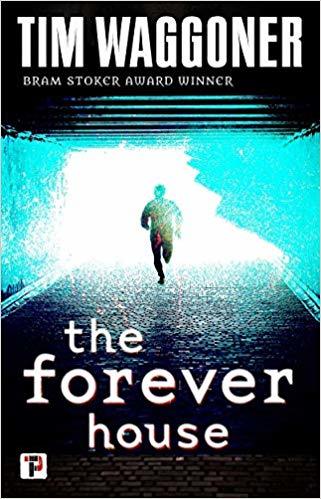 Terror has a healthy appetite in Bram Stoker Award winner Tim Waggoner’s The Forever House [March 2020, Flame Tree Press].
Terror has a healthy appetite in Bram Stoker Award winner Tim Waggoner’s The Forever House [March 2020, Flame Tree Press].Move over Collins, Munsters, and Addams, there’s a new breed of nightmarish neighbor coming to town. In The Forever House, a sleepy cul-de-sac with a dark past gets a new lesson in residential horror when the Eldreds move in. The Eldreds aren’t the sort of folks that anybody would race to send the welcome wagon out to, either. It’s not simply because the family of five has just moved into the Raines’ old home, the house at the bottom of the cul-de-sac where a mother went insane and murdered her entire family a few years prior, it’s that everything about the Eldreds—from their car (which makes Vantablack pale by comparison) to their names, to the strange inability to actually get a good look at any one of them (especially the one with the robotic movements and glowing green eyes)—are so frightfully unusual.
Unfortunately, “unusual” would be a rather massive understatement in the Eldreds case, because not only are the five new neighbors decidedly odd, but they are also categorically other. The Eldreds are an ageless, inhuman species that feed on the negative emotions of humans, replenishing themselves on the delicacies of human terror, prejudices, and resentments. Now, the residents of the seemingly quiet cul-de-sac promise a feast of the sort of buffet of dysfunction only suburbia can offer. With heapings of narcissism, bigotry, abuse, and marital discord, the residents of Rockridge have enough skeletons in their closets to fill the metaphorical bellies of the Eldreds for years.
Which, of course, is exactly why the Eldreds chose them. When the residents find themselves lured—and trapped—inside the House of Blood, they’ll have to survive their worst fears and deepest, darkest secrets if they are to have any hope of getting out alive. Even then, it’s probably not going to happen.
Fast-paced, hair-raising, and with a twist ending with enough spin to make you rethink who the real monsters are, The Forever House is the sort of phantasmagorical terror that keeps you reading through gore, grit, and grime until the very end.
Synopsis (Goodreads):
In Rockridge, Ohio, a sinister family moves into a sleepy cul de sac. The Eldreds feed on the negative emotions of humans, creating nightmarish realms within their house to entrap their prey. Neighbors are lured into the Eldreds' home and faced with challenges designed to heighten their darkest emotions so their inhuman captors can feed and feed well. If the humans are to have any hope of survival, they'll have to learn to overcome their prejudices and resentments toward one another and work together. But which will prove more deadly in the end, the Eldred . . . or each other?
Published on March 02, 2020 14:59
February 26, 2020
BOOK REVIEW: The Mountains Sing by Nguyen Phan Que Mai
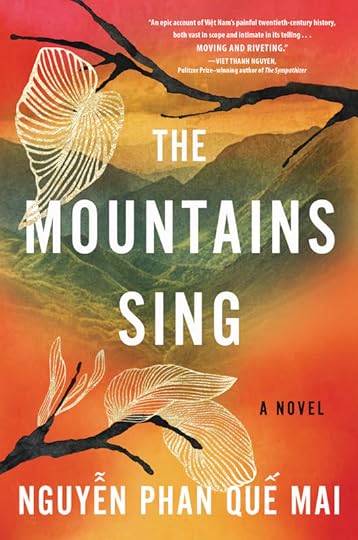 There is good reason that The Mountains Sing [Algonquin Books, March 17, 2020], the first novel in English by award-winning poet Nguyen Phan Que Mai, has been ranked among “the most exciting writers to emerge in post-war Vietnam”--it is, in a word, breathtaking.
There is good reason that The Mountains Sing [Algonquin Books, March 17, 2020], the first novel in English by award-winning poet Nguyen Phan Que Mai, has been ranked among “the most exciting writers to emerge in post-war Vietnam”--it is, in a word, breathtaking.The Mountains Sing is an epic, multi-generational narrative that traces the arc of Vietnam’s turbulent and painful twentieth-century history as Que Mai gracefully weaves together the timeline of four generations of the Tran family—beginning during the Communist Land Reform of the 1950s and extending through the aftermath of the American bombing of Ha Noi in the early 1970s. Steeped in the storytelling traditions of Vietnam, The Mountains Sing is decadent and heart wrenching, equal parts lush and vibrant in its unfamiliar setting, and just as persistently unrelenting in its depiction of decades worth of war and conflict.
This story, although captivating and stunningly crafted, is nonetheless brutal, making its narration ring true in the heart of the reader--“The more I read, the more I became afraid of wars. Wars have the power to turn graceful and cultured people into monsters.”
Written as Que Mai’s response to single-sided, Western-written depictions of Vietnam as a place of war, simplicity, and cruelty, The Mountains Sing presents a story of history, of resiliency, and of hope as told through the indelible voices of the Tran family, alternating between the family’s matriarch, Tran Dieu Lan, and extending to her granddaughter, Huong. It is every bit a tale as much of painful desperation and the horrors of famine, war, and class struggle, as it is a moving lesson in hope, renewal, and the bond of family. “…I realized that war was monstrous. If it didn’t kill those it touched, it took away a piece of their souls, so they could never be whole again.”

Que Mai’s The Mountains Sing is a heartfelt inquiry into Vietnam’s past, a moving tribute to those who braved, endured, and perished during decades of upheaval and suffering, and, in the end, a novel that will simultaneously break your heart and mend it, a testament to both Que Mai’s storytelling and the strength of a people who never gave up, no matter how much was levied against them. On a personal note, The Mountains Sing may not have been a title the likes of which normally make its way into my library, but it has nonetheless found a place as one of the most moving, and fundamentally eye-opening, novels I feel I will read in my lifetime.
Published on February 26, 2020 00:00
Seven Jane's Blog
- Seven Jane's profile
- 91 followers
Seven Jane isn't a Goodreads Author
(yet),
but they
do have a blog,
so here are some recent posts imported from
their feed.



